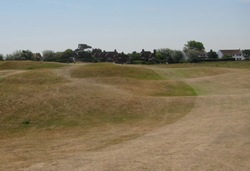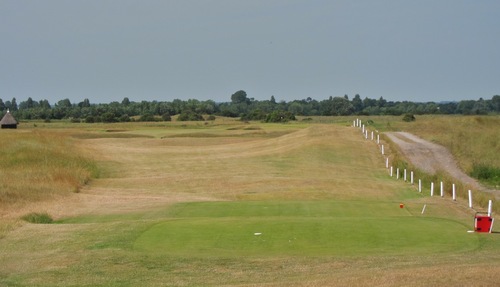Your First Sandwich Primer
/ The Open at Royal St. George's is upon us and Lawrence Donegan says the place has a lot riding on this week after Ben Curtis' shocking win in 2003.
The Open at Royal St. George's is upon us and Lawrence Donegan says the place has a lot riding on this week after Ben Curtis' shocking win in 2003.
But this was never enough for the purists and the snobs, so for the past eight years Curtis's victory on the Kent coast has stood as a rebuke – to the player himself, who was deemed "unworthy", to the Royal St George's course, judged by some, including no less a figure than Nicklaus, as mediocre and "too quirky", and to the R&A, which allegedly made a mess of the set-up that week, growing rough so long and so thick that a difficult test of golf tipped over into the realm of unfair.
Of the three targets for this opprobrium, only Curtis should be entirely in the clear. He won fair and square. The golf course is an acquired taste, to say the least, although 2003 aside it has developed a habit of identifying the best players in the world.
 Larry Dorman says one of the problems from 2003--silly rough--won't be an issue but I also couldn't help but cringe at Peter Dawson's pleasure upon the place greening up.
Larry Dorman says one of the problems from 2003--silly rough--won't be an issue but I also couldn't help but cringe at Peter Dawson's pleasure upon the place greening up.
Peter Dawson, the chief executive of the R&A, is not promising that St. George’s will be any easier than the course that produced a winning score of three over par, but he says the course will be a fairer test.
“There was no rain here between February and May, virtually not a drop,” he said Sunday. “The rain has come back to average level and the course has greened up — we are pleased with it. The player reaction has been very positive.“The changes that we have made have helped at 1 and 18, which were unpopular tee shots last time. The greens are just lovely. All credit to green staff. The rough is patchy — it is not huge. I am hoping for not too much hacking out, but it will be a factor in distance control.”
 If there is one story you read today, make it Lorne Rubenstein's eloquent look at the history of St. George's, the element of chance and the sense of adventure that makes Sandwich such a special place. He argues effectively that if nothing else, Sandwich's quirkiness should be prepared for by the player in a way they are not used to in modern tournament golf.
If there is one story you read today, make it Lorne Rubenstein's eloquent look at the history of St. George's, the element of chance and the sense of adventure that makes Sandwich such a special place. He argues effectively that if nothing else, Sandwich's quirkiness should be prepared for by the player in a way they are not used to in modern tournament golf.
The player who expects to find his ball in the middle of the fairway simply because he has landed it there will need to think again if he hasn’t prepared himself adequately for bad bounces. But, in fact, there’s no such thing as a bad bounce at Sandwich. There are only bounces, as dictated by the nature of the heaving landscape.
Regarding the notion of quirk, Lorne writes:
Sandwich, which pundits frequently refer to as quirky, isn’t that at all. The use of the word merely reflects how far the game has strayed from its earliest days, when the idea was that the golfer should whack a ball across countryside toward a target. Golf was an adventure, not a plodding affair where a player smashed the ball 300 yards and then airlifted it with a short iron to a sticky green. That’s golf by numbers. Links golf in its most elevated and arresting form is golf by knowledge – of oneself and the vagaries of nature.











